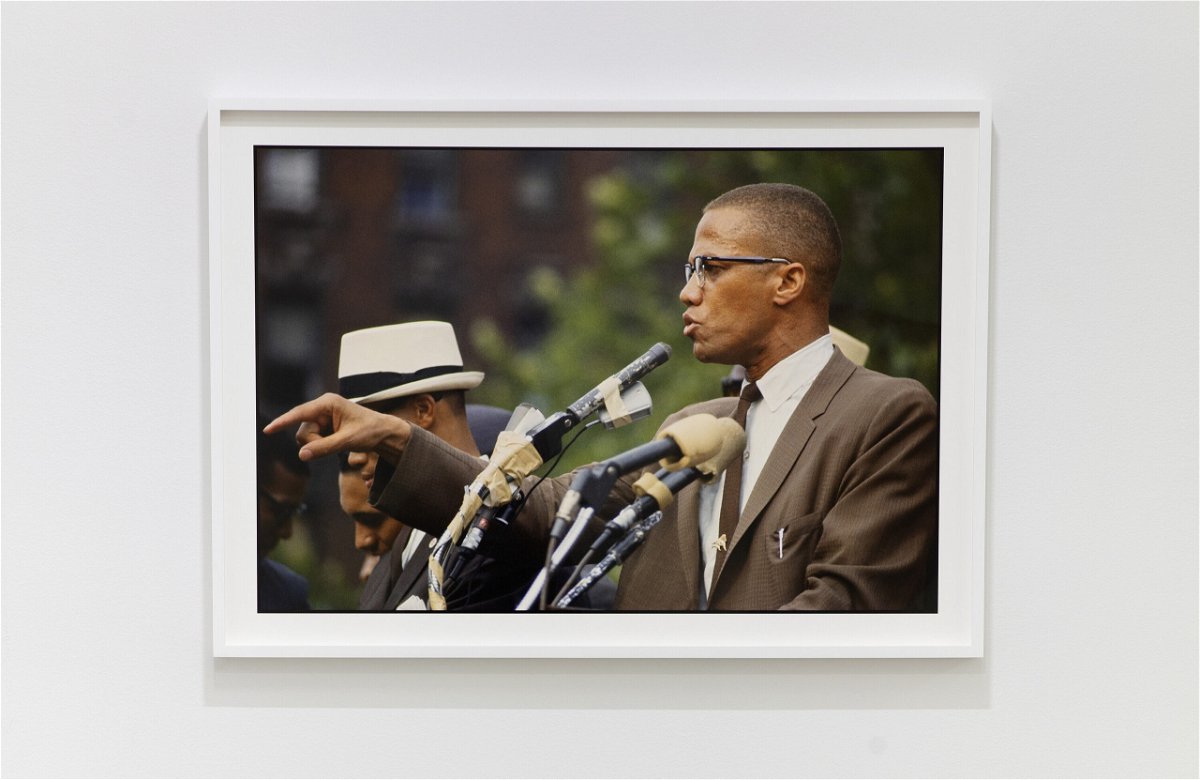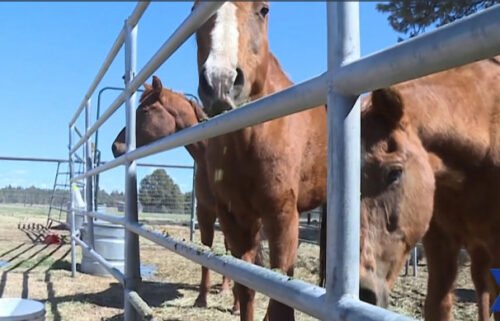An exhibition considers what’s changed since the Black Power movement — and what hasn’t

An exhibition considers what's changed since the Black Power movement and what hasn't. Malcolm X's ideas laid the groundwork for what would become the Black Power movement.
Harmeet Kaur, CNN
Many will know the iconic photo of Black Panther Party co-founder Huey P. Newton sitting on a rattan peacock chair, with a spear in one hand and a shotgun in the other.
Taken in 1968, the image would become one of the defining symbols of Black Power — a cultural and political movement in the late ’60s and early ’70s that emphasized Black pride and self-determination.
It’s also the inspiration for “Theorist’s Throne,” a work by Radcliffe Bailey, made in 2012, that recreates the peacock chair in miniature, covers it in glitter and encloses it in a bell jar. In remixing that historical symbol, the piece captures just what “This Tender, Fragile Thing,” a new exhibition at the Jack Shainman Gallery in upstate New York, is all about.
Opening on January 15, the show explores the legacy of the Black Panthers and how they’ve influenced artists today, featuring Black Panther memorabilia alongside the work of contemporary Black artists.
“There’s a lot to be learned from the [Black] Panther Party,” Bailey, one of dozens of artists whose work is featured in the exhibition, told CNN. “We’re coming from a lot of different places and different directions but … when we put our works next to each other, something else comes out of it that is unique.”
For curator and gallery founder Jack Shainman, “This Tender, Fragile Thing” is a reflection on progress — both the immense strength needed to achieve it and the care required to maintain its results. By juxtaposing the historical and the contemporary, it asks: What has changed since the ’60s and how much further have we to go?
“George Floyd’s murder captured the world’s attention and made people truly confront the racism that was and is still prevalent in America,” he wrote in an email to CNN. “While the outpouring of support by white Americans was encouraging, headlines fade and the outrage subsides. Progress is not just guaranteed with time. Putting on this exhibition now is hopefully a reminder of that.”
Shainman said one of the goals of the show is to offer a more comprehensive picture of the Black Panthers, an organization that has long been misunderstood as an anti-White militant group. In reality, the organization advocated for self-defense in the face of attacks, rallied alongside their White allies and developed social programs for the community.
In March, the gallery plans to host a talk with Chairman Fred Hampton Jr. of the Black Panther Party Cubs and Akua Njeri (formerly Deborah Johnson), the son and widow of Chairman Fred Hampton. As the head of the Panthers’ Illinois chapter, Hampton Sr. led community service efforts in Chicago such as free health clinics and breakfasts before he was killed by police in 1969.
“This show only scratches the surface of all that The Black Panthers had and have done since their inception, but a large aim of the exhibition is for viewers to have the seed of thought and critical awareness that this was an incredibly multifaceted organization that went well above and beyond for its community,” Shainman said.
“This Tender, Fragile Thing” is a revisit of a show put on by the gallery in 2005. The previous exhibit, “The Whole World Is Rotten,” also considered the Black Panthers in a contemporary context. While this year’s exhibition includes some of the same works as the 2005 show, it pushes the conversation forward with pieces that better speak to the current moment.
One of those pieces is Arthur Jafa’s powerful 2016 work “Love is the Message, the Message is Death.” The 7.5-minute video montage, set to Kanye West’s “Ultralight Beam,” stitches together moments of unspeakable pain with moments of pure joy to present a portrait of Black life in the US.
Nick Cave’s 2018 “Arm Peace,” a bronze arm protrudes from the wall, with flowers resembling a funeral wreath draped from it, memorializes the Black people who have been killed at the hands of gun violence.
Elsewhere in the exhibit, Akinsanya Kambon, an artist and former Black Panther, invokes the spirit of the organization through his ceramic sculptures. Drawing on African spirituality and religious traditions, his work is an expression of pride and a recognition of history — a mission that was instilled in him during his time as the lieutenant of culture for the Black Panther Party’s Sacramento chapter.
“One of the things the Black Panther Party did is it allowed me to understand that if you are an artist or if you come from a history of oppression and you do art, your art should talk about those things,” Kambon told CNN. “Your art should challenge the system that puts you where you are.”
“This Tender, Fragile Thing” is on view at Jack Shainman Gallery: The School in Kinderhook, New York, from January 15 through April 30.
Top image: Gordon Parks, Untitled, Harlem, New York, 1963. © Gordon Parks Foundation. Courtesy of the Gordon Parks Foundation and Jack Shainman Gallery, New York.
The-CNN-Wire
™ & © 2022 Cable News Network, Inc., a WarnerMedia Company. All rights reserved.



